Links to various Aetna Better Health and non-Aetna Better Health sites are provided for your convenience. Aetna Better Health is not responsible or liable for non-Aetna Better Health content accuracy or privacy practices of linked sites or for products or services described on these sites.
What are depression and anxiety?
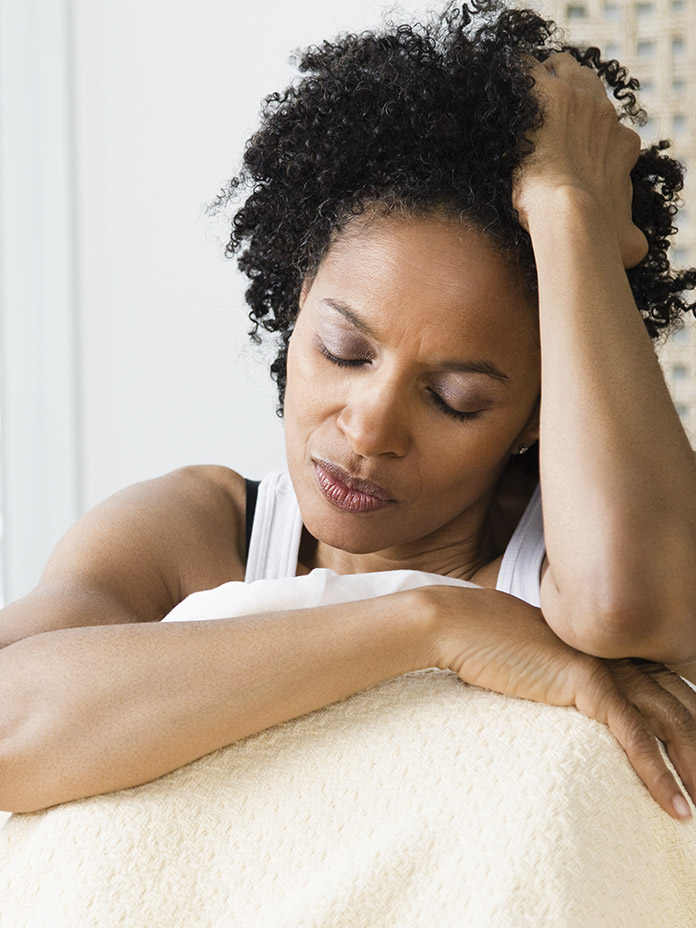
What are depression and anxiety?
Depression and anxiety are two of the most common mental illnesses in the U.S.
Depression is more than just feeling temporary sadness. It’s a mood disorder that affects how people feel, think and handle daily life.
Anxiety is what we feel when we are worried, nervous, tense or afraid. Having occasional anxiety is a normal part of life. However, people with anxiety disorders often have intense, ongoing worry and fear about everyday situations.
Having either of these conditions can affect your ability to work, study, eat, sleep and enjoy life. Just trying to get through the day can be overwhelming.
Many people confuse depression with sadness. Both can be triggered by a stressful event, such as money problems or the loss of a loved one. And while some of the symptoms are similar, people who are diagnosed with depression often don’t feel any joy. They can’t seem to snap out of it. It may eventually cause them to:
Withdraw from family and friends
Grow tired, weary or restless
Feel a sense of hopelessness
People with depression can also have anxiety, which often causes overwhelming and unreasonable fear. Some anxiety disorders include:
What can you do to feel better?
What can you do to feel better?
Whether you have depression or anxiety (or both), don't ignore the warning signs. Be sure to seek help. In most cases, these conditions will only get worse if they go unchecked. Depression and anxiety are treatable conditions just like many other medical issues.
You can learn more about the different types of depression treatment and anxiety treatment.
Try these things at different times to learn what works for you:
Find ways to relax. Try yoga, meditation or breathing exercises.
Connect with others. Talk with family members and friends and explain how they can be helpful.
Get enough sleep. Most adults should aim to get between 7 and 9 hours of sleep each night.
Exercise regularly. Doing physical activity can help naturally boost your mood.
Maintain a routine. Having a daily routine can create structure in your life. This promotes a sense of control, which may help ease feelings of depression and anxiety.
- Join a support group. Find a safe space to connect with others who may be dealing with similar challenges.
Once you get help, you can begin to heal. The earlier the diagnosis, the earlier the treatment, the better the outcome.
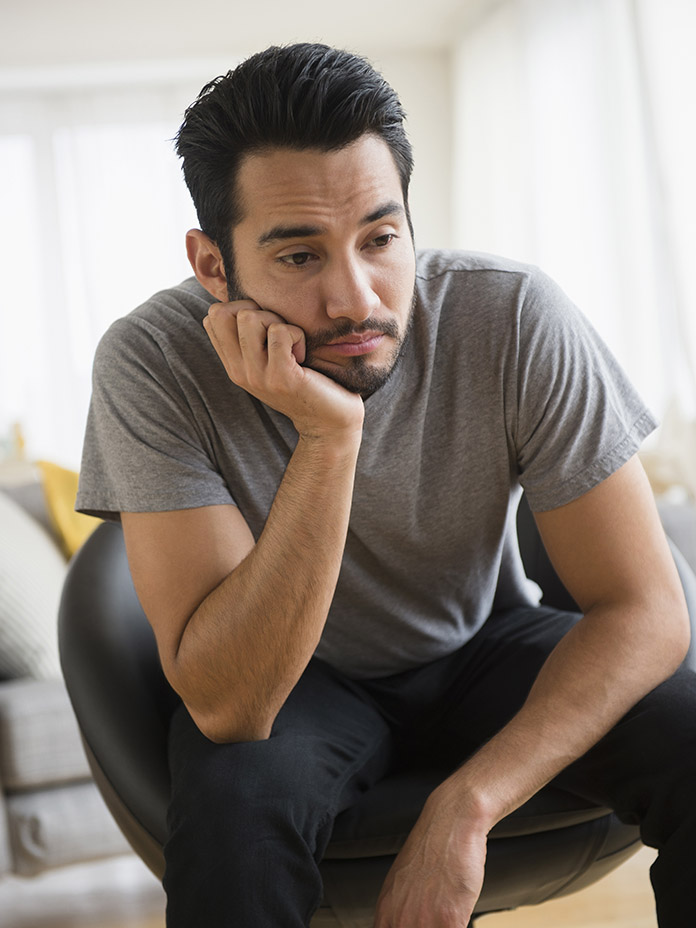
Increasing signs of depression can also mean a higher suicide risk. These include:
Threats or talk of harming themselves or others
Talking about feeling hopeless, being a burden to others or having no reason to live
Giving away their things
Making a will or funeral plans
Buying a weapon
Sudden cheerfulness or calm after a phase of depression
Do you notice these signs in yourself or someone you care about? If you do, you’re not alone. And help is just one step away. You can:
Call or text 988 to reach the 988 Suicide & Crisis Line
Call 911 for emergency services
Go to the nearest hospital emergency room
What are the signs and symptoms?
Scroll down to learn how to spot signs of depression and anxiety in yourself or someone else.
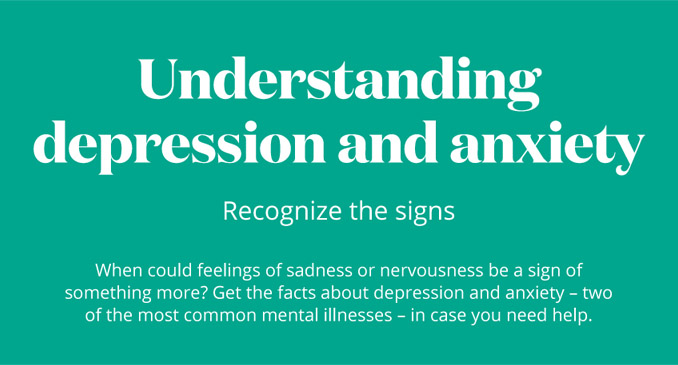
Recognize the signs
When could feelings of sadness or nervousness be a sign of something more? Get the facts about depression and anxiety — two of the most common mental illnesses — in case you need help.
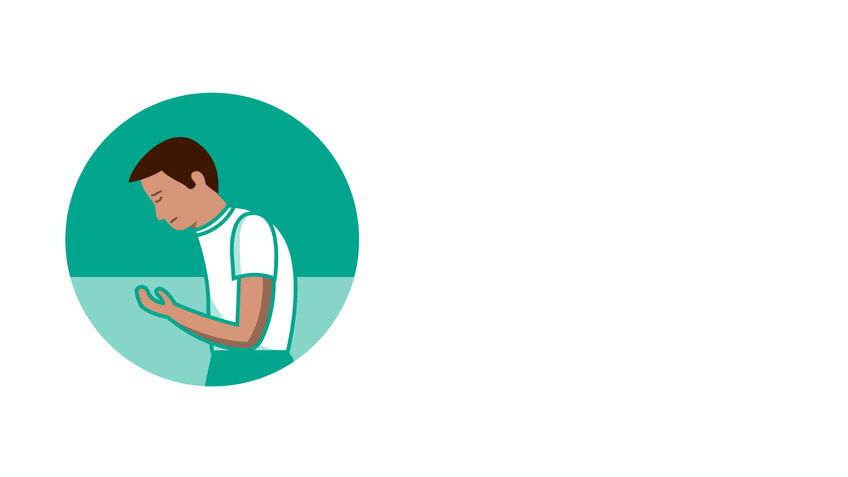
Are you sad?
Sadness is a normal human emotion.
Everyone feels sad sometimes.
You might feel blue, cry or have trouble sleeping.
Sadness is temporary and fades over time.
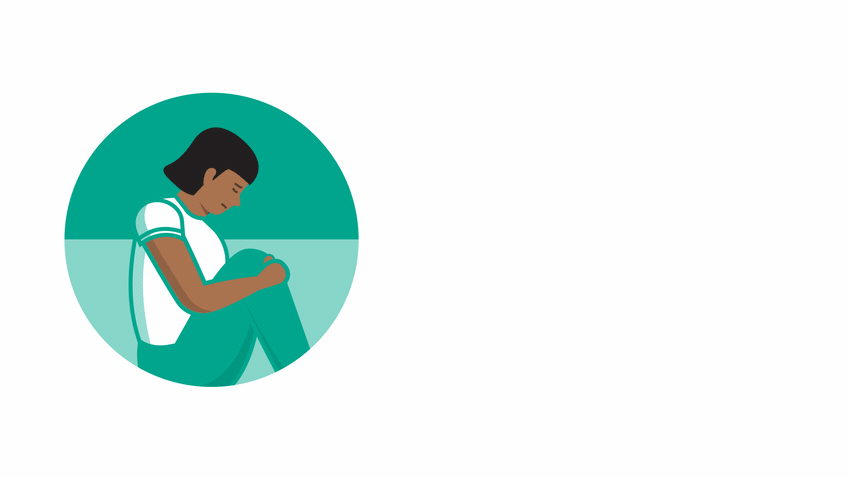
Could you be depressed?
Depression may be a serious medical problem.
It affects how you feel, think and act.
You might not eat, sleep or want to work.
Depression is not uncommon.
It can be treated effectively.
16.2 million adults in the U.S. had at least one major depressive episode in 2016.
Half of those with depression also have anxiety.

Do you have an anxiety disorder?
Occasional anxiety is normal.
Does your nervousness make you sick?
Do you have unfounded fears?
If worrying causes distress and affects your daily living, it could be serious.
You are not alone.
40 million adults in the U.S. are affected by anxiety.
Women are twice as likely to be affected by anxiety as men.
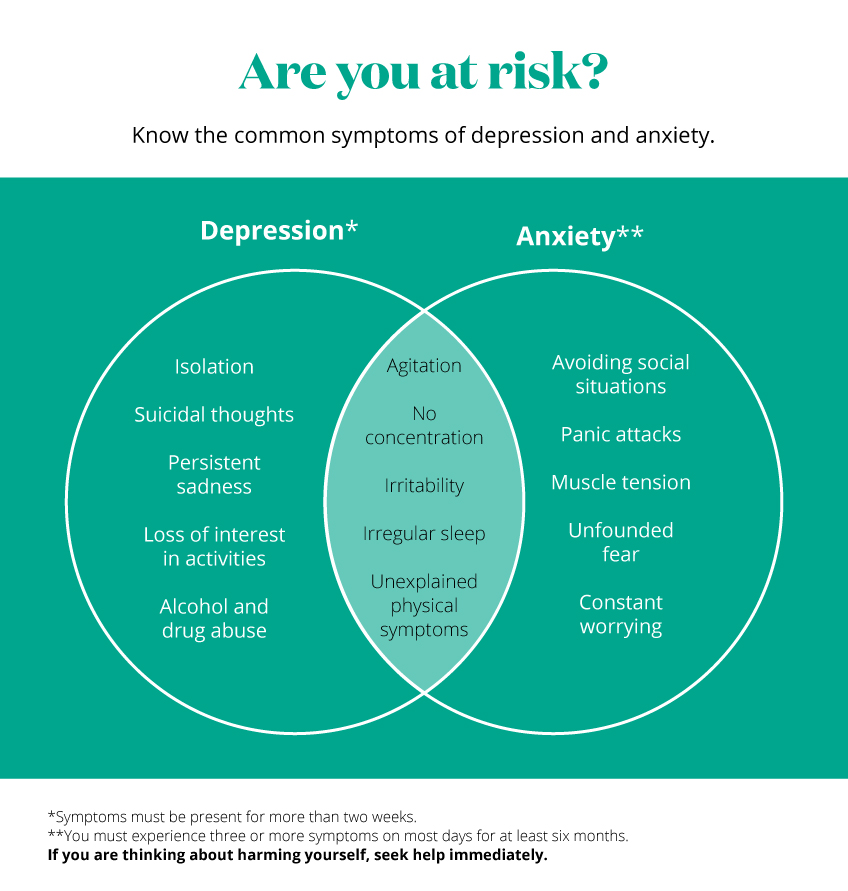
Are you at risk?
Depression
Isolation
Suicidal thoughts
Persistent sadness
Loss of interest in activities
Alcohol and drug abuse
Agitation
No concentration
Irritability
Irregular sleep
Unexplained physical symptoms
Depression symptoms must be present for more than two weeks. If you are thinking about harming yourself, seek help immediately.
Anxiety
Agitation
No concentration
Irritability
Irregular sleep
Unexplained physical symptoms
Avoiding social situations
Panic attacks
Muscle tension
Unfounded fear
Constant worrying
To be diagnosed with an anxiety disorder, you must experience three or more anxiety symptoms on most days for six months. If you are thinking about harming yourself, seek help immediately.
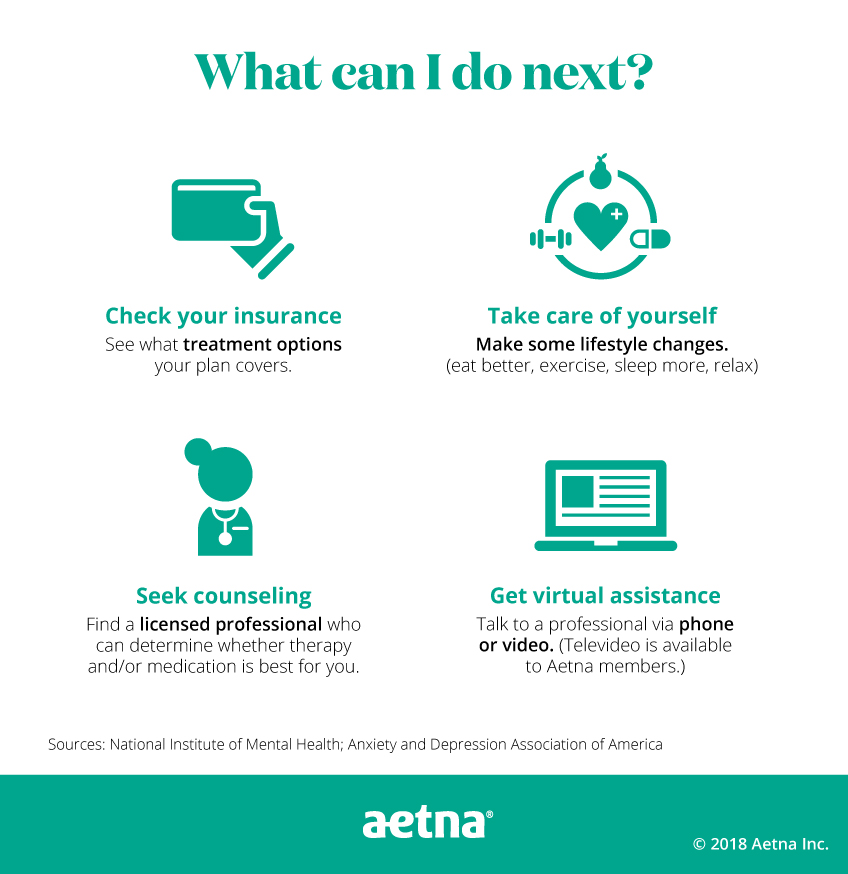
What can I do next?
Check your insurance — See what treatment options your plan covers.
Take care of yourself — Make some lifestyle changes. (Eat better, exercise, sleep more, relax.)
Seek counseling — Find a licensed professional who can determine whether therapy, medication (or both) is best for you.
Get virtual assistance — Talk to a professional via phone or video. (Televideo is available to Aetna members.)
Sources: National Institute of Mental Health, Anxiety and Depression Association of America
Learn more about depression and anxiety



